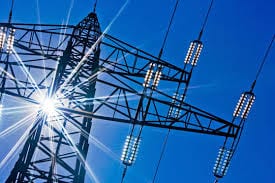Tesla-hysteria
 With renewable energy now reaching households in the form of rooftop solar and battery storage (like Tesla’s new Powerwall), the chorus calling for the demise of the traditional utility has become deafening.
With renewable energy now reaching households in the form of rooftop solar and battery storage (like Tesla’s new Powerwall), the chorus calling for the demise of the traditional utility has become deafening.
The rise of distributed generation will cause massive load and grid defection that will lead to a loss of revenue by the utilities. As a result, utilities will be hobbled by the democratisation of electricity generation or so the narrative goes.
Rising self-generation from increasing solar rooftop penetration and load shifting via home batteries will lead to a utility death spiral from an ever-shrinking customer pool. These disruptive impacts are indeed occurring, but we believe it is too early and also unlikely to say traditional utilities are dead men walking.
An analogy to the current situation is the evolution of the telecom sector. Back in the late 1990s, wireless communication and the Internet was going to relegate the incumbent telcos to the history pages as their fixed line customers all switched to wireless and consumed media via the internet.
Fast forward nearly two decades and the incumbents are still here and in fact thriving. Indeed, wireless communications and services like Netflix have become mainstream but the incumbency adapted and embraced changed. The same will happen again.
Distributed generation needs more connectivity not less
By its very nature distributed generation needs flexibility. There is an increased need for interconnects between suppliers and consumers of electricity, with energy flowing both ways. This is in contrast to the traditional hub-and-spoke utility model where energy is essentially delivered in a linear fashion. Increased connectivity is preferable to islands of generation assets because it is simply more efficient.
An example of this efficiency (or lack thereof) was recently reported by the Business Times where the Danish Energy Association said that up to 71% of its clean energy is being rejected by Germany because of a lack of transmission capacity.
This problem of missing connections will extend even at the neighbourhood level where we see the rapid penetration of solar rooftops take hold. This is where the Utilities can take advantage of their existing market positions; by providing these neighbourhood connections.
Utilities will leverage off their strengths
Utilities have numerous strengths so that means they should not be written off:
- Huge balance sheets – Transforming the power sector will need investment and these companies are already in a position to be able to do this on a large scale.
- Ready access to capital – Whether through new equity or debt, utilities have no problem accessing the capital markets for funds at very attractive rates. Their size and history afford them a cost of capital advantage over newcomers to the sector.
- Existing customer relationships – A good idea still needs a path to market otherwise it will remain unfulfilled. Utilities have that path in that they already have a commercial relationship with virtually every household and business in their geographic area.
- Technical expertise – Having built and managed the biggest piece of machinery in any country (the grid network), they have an intimate and deep understanding of how it all works and where the existing problems are.
- Existing regulatory and political relationships – Utilities have been operating under the same regulator, in some cases, for decades. These relationships are critical at a time when the status quo is being challenged as utilities can speak to the key decisions makers in a language they understand.
Live examples where utilities are doing something
With all these strengths, there are already examples where utilities are adapting to their changed circumstances.
New Jersey Resources, a natural gas distribution utility, started offering residential solar solutions in 2010. The company now has new commercial relationships with over 3,000 customers who save on average $25 a month on their previous electricity bill.
About three years ago, NRG Energy launched a solar leasing product and has deployed over 53 megawatts so far. This year they target to exit with approximately 40,000 cumulative customers, more than doubling the number of customers it had at the end of 2014.
In November 2014, Southern California Edison contracted for 250 megawatts of distributed solar, behind-the-meter-batteries and automated demand response system from numerous vendors as part of its 2.2-gigawatt grid modernisation plan. In effect, SoCal has partnered with the technology disruptors in a commercial fashion that is beneficial to all.
Pinnacle West was one of the first utilities to get regulatory approval to apply a monthly charge to customers who had installed solar on their roof. Shortly after that in December 2014, the utility followed up with another approval to be allowed to rent an existing customer’s rooftop space so Pinnacle could install their solar equipment. Households will earn a rental fee as long as Pinnacle’s panels are on their roof, and Pinnacle is free to direct this electricity back into its network.
This year in Australia, AGL has launched a solar rooftop and battery storage product. Customers agree to sign-up for either a seven or 12-year contract thus ensuring AGL retains these customers as the industry environment evolves.
The focus will be on reliability
Solar panels, batteries, smart meters, wind turbines and demand response were all vague and distant threats to the centuries-old utility business model only just a few years ago. Seemingly overnight, these “science experiments” have asserted their rise and now threaten to topple the incumbency.
This does not mean the traditional utility will disappear. Rather, we can expect the most progressive ones to evolve with their changed circumstances and embrace these new technologies. Simultaneously, regulators will be rewriting industry rules to correctly compensate all participants.
We believe First Solar’s CEO, Jim Hughes, said it best when he recently suggested the future compensation for industry participants will be driven by what they add to system reliability. This perfectly captures the essence of the trend towards distributed generation. Ultimately the customer does not care how electricity is delivered, just that it is and when it is needed.
Instead of writing off the incumbency, be ready for their response because it is coming.
Nathan Lim is a portfolio manager with Australian Ethical Investment.










